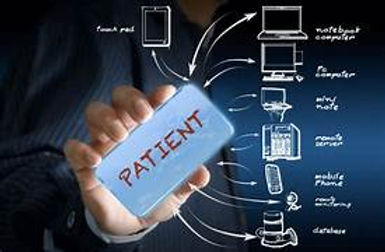

In today’s digital world, healthcare providers are increasingly using technology to manage patient data. While this has streamlined healthcare processes and improved patient care, it has also raised significant concerns about the security and privacy of sensitive medical information. As healthcare data becomes more digitized, the need for robust security measures to protect patient privacy has never been greater. This article explores the importance of patient data security, the challenges involved, and the best practices to ensure privacy in the digital age.
What is Patient Data Security?
Patient data security refers to the protection of sensitive health information from unauthorized access, theft, or loss. This includes any data related to a patient’s medical history, diagnosis, treatments, test results, and personal identification information (PII). As healthcare organizations move toward electronic health records (EHRs), maintaining the security of this data is crucial to ensuring patients’ privacy and complying with regulations.
With the digitization of healthcare, patient data is often stored, shared, and transferred through electronic systems, making it vulnerable to cyberattacks, data breaches, and other security risks. Effective patient data security practices aim to safeguard this sensitive information from unauthorized access while ensuring its availability for medical use when needed.
Why Patient Data Security Matters
Patient data security is essential for several reasons, including:
1. Protecting Patient Privacy
Patients trust healthcare providers with sensitive personal information, and it is critical that their privacy is respected. A breach of patient data can lead to identity theft, financial fraud, and other forms of exploitation. Protecting this information ensures that patients feel safe sharing vital details with their healthcare providers.
2. Ensuring Trust in Healthcare Systems
Trust is a cornerstone of the doctor-patient relationship. When patients know that their data is securely protected, they are more likely to seek care, share accurate information, and adhere to treatment plans. Maintaining data security is crucial to fostering this trust and ensuring the integrity of the healthcare system.
3. Regulatory Compliance
Healthcare providers are bound by regulations such as the Health Insurance Portability and Accountability Act (HIPAA) in the United States, which sets strict guidelines for the handling and protection of patient data. Failure to comply with these regulations can result in severe financial penalties, legal consequences, and reputational damage.
4. Preventing Data Breaches
Data breaches in healthcare can have devastating consequences, including the exposure of private medical records, financial loss, and harm to a patient’s reputation. Effective data security measures help mitigate the risk of such breaches and prevent sensitive information from falling into the wrong hands.
Challenges in Patient Data Security
While healthcare organizations strive to protect patient data, several challenges exist that make this task difficult:
1. Cybersecurity Threats
The healthcare sector is a prime target for cyberattacks due to the vast amounts of valuable data it holds. Hackers often target healthcare organizations with malware, ransomware, and phishing attacks to gain unauthorized access to patient records. Cybersecurity threats are constantly evolving, making it challenging for organizations to stay ahead of new tactics.
2. Data Sharing and Interoperability
In modern healthcare, patient data is frequently shared among multiple providers, specialists, and institutions. While this data sharing enhances collaboration and improves patient outcomes, it also increases the risk of unauthorized access. Ensuring secure communication and interoperability between healthcare systems is crucial to protecting patient information.
3. Human Error
Even with advanced security measures in place, human error remains one of the biggest threats to patient data security. Healthcare staff may inadvertently expose sensitive information through misplaced documents, unsecured devices, or weak passwords. Regular training and awareness are needed to minimize the risk of mistakes that could compromise patient data.
4. Legacy Systems
Many healthcare organizations still rely on outdated or legacy systems that are not equipped with modern security features. These systems may be vulnerable to breaches and difficult to upgrade to meet current security standards. Transitioning to more secure, updated systems can be time-consuming and costly but is necessary to protect patient data.
Best Practices for Protecting Patient Data
To ensure the security and privacy of patient data, healthcare organizations must implement a range of best practices and strategies.
1. Data Encryption
Encrypting patient data is one of the most effective ways to protect it from unauthorized access. Encryption converts data into a coded format that can only be read by those with the appropriate decryption key. This ensures that even if data is intercepted during transmission, it remains unreadable and secure.
2. Access Control and Authentication
Limiting access to patient data is crucial for maintaining privacy. Healthcare organizations should implement strict access controls that ensure only authorized personnel can access sensitive information. This can be achieved through role-based access controls (RBAC) and multi-factor authentication (MFA), which require users to provide multiple forms of identification before accessing data.
3. Regular Security Audits
Conducting regular security audits allows healthcare organizations to assess the effectiveness of their data security measures and identify potential vulnerabilities. Audits should include a review of access logs, data protection policies, and system configurations to ensure compliance with security standards.
4. Employee Training and Awareness
Educating healthcare staff about data security protocols is essential for minimizing human error. Regular training on the importance of patient data security, recognizing phishing attempts, and using secure passwords can help reduce the likelihood of security breaches caused by mistakes.
5. Secure Data Storage and Backup
Storing patient data securely is essential for maintaining confidentiality and ensuring its availability in case of emergencies. Data should be stored in encrypted databases, and regular backups should be taken to prevent data loss in case of system failures or cyberattacks. Backups should also be encrypted to protect sensitive information.
6. Patient Consent and Transparency
Healthcare organizations should ensure that patients are aware of how their data is being collected, stored, and used. Obtaining patient consent for the sharing and use of their data is a key component of maintaining privacy. Transparent communication helps build trust and reassures patients that their information is being handled responsibly.
The Role of Technology in Patient Data Security
Technology plays a central role in ensuring patient data security in the digital age. The integration of advanced security solutions helps healthcare organizations manage risks and protect sensitive information effectively.
1. Blockchain for Data Security
Blockchain technology, known for its secure, decentralized nature, is increasingly being explored for use in healthcare data security. Blockchain can provide an immutable ledger for patient records, ensuring that data cannot be altered without detection. This technology can enhance data integrity and prevent tampering.
2. Artificial Intelligence (AI) for Threat Detection
AI and machine learning are increasingly being used to detect unusual patterns or behaviors that could indicate a potential data breach. These technologies can quickly analyze vast amounts of data and flag suspicious activity, allowing for rapid response and mitigation of security threats.
3. Cloud Security
Cloud computing has become a key component of healthcare data management, offering flexibility and scalability for storing patient information. However, cloud-based systems must be secured with encryption, access control, and continuous monitoring to prevent unauthorized access or data breaches.
Conclusion
As healthcare continues to embrace digital technologies, the security and privacy of patient data must remain a top priority. Protecting patient information is not only a legal and ethical responsibility but also crucial to maintaining trust in the healthcare system. By implementing robust security practices such as data encryption, access control, regular audits, and employee training, healthcare organizations can better safeguard patient data in the digital age.
While challenges like cybersecurity threats, data sharing, and legacy systems persist, advances in technology offer promising solutions for securing patient information. Blockchain, AI, and cloud security are just a few examples of how technology can enhance data protection and mitigate risks. As the healthcare industry adapts to the digital age, it must continue to prioritize patient data security to ensure that sensitive information remains safe and private.
By investing in these protective measures and staying ahead of emerging threats, healthcare providers can ensure that patient data remains secure and that individuals’ privacy is respected in an increasingly digital healthcare landscape.

Leave a Reply